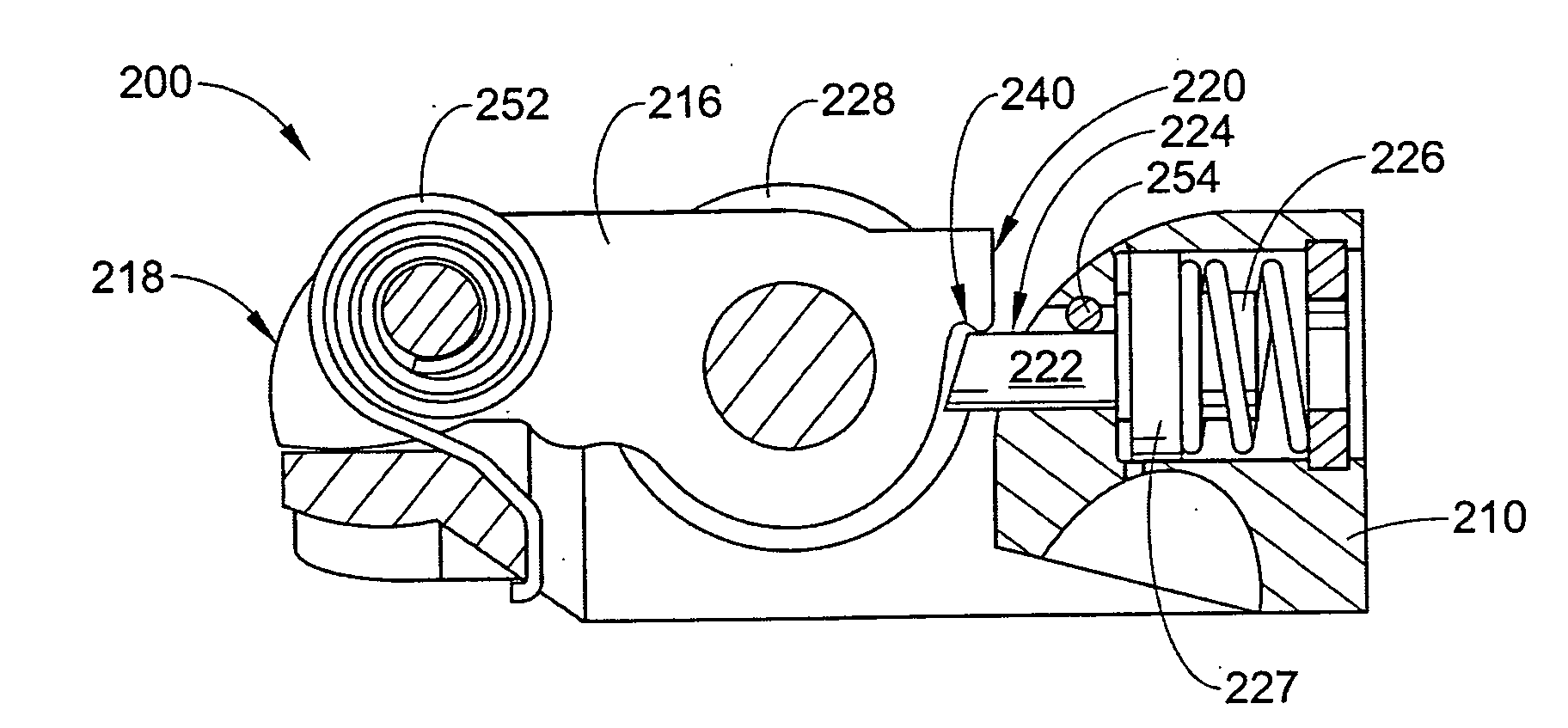Deactivating roller finger follower
a roller finger follower and deactivating technology, applied in the direction of valve arrangements, instruments, mechanical control devices, etc., can solve the problems of poor manufacturing tolerance, long-term wear, and inability to reliably deactivate the known deactivating rocker arm assembly
- Summary
- Abstract
- Description
- Claims
- Application Information
AI Technical Summary
Benefits of technology
Problems solved by technology
Method used
Image
Examples
first embodiment
[0021] With reference to FIGS. 1-4, a deactivating roller finger follower (DRFF) assembly 100 is shown. The assembly 100 generally includes a body or housing 110 having a valve end 112 and a pivot end 114. The assembly 100 also includes an arm 116 having a hinged end 118 and a free end 120. A plunger 122 is disposed in the pivot end 114 of the body 110 and includes a latching end 124 and a piston end 126.
[0022] With particular reference to FIG. 1, the DRFF assembly is shown in a working configuration. As shown, a stem portion of a poppet valve A engages the valve end 112 of the body 110. In addition, the pivot end 114 is shown supported by a rocker pivot or hydraulic lash adjuster B. Along an upper portion of the assembly 100, a cam lobe C of a cam shaft D is shown in rolling contact with the first and second roller bearings 128, 130. During normal engine operation, the camshaft D and cam lobe C rotate urging a first and second roller bearing 128, 130 in a downward direction. Since ...
third embodiment
[0034] A distinction between the third embodiment and the previous embodiments involves the use of an anti-rotation shoulder 354 on the piston end 326 of the plunger 322. The anti-rotation shoulder 354 shown in FIGS. 9-11 includes a semi-circular or D-shaped cross section such that it includes an upper flat surface. The D-shaped anti-rotation shoulder 354 slidably engages a similar D-shaped aperture 356 in the retainer member 348. Because the cross section of the shoulder 354 is non-circular and since the shoulder 354 engages a non-circular aperture 356, the shoulder 354 and plunger 322 are prevented from rotating within the first and second plunger bores 342,343. Of course, the cross section of the anti-rotation shoulder 354 may be of any other non-circular regular or irregular geometry (such as square, triangular, rectangular, etc). Because the plunger 322 is prevented from rotating about the longitudinal axis of the assembly 300 once again ensures that the upper flat engaging sur...
PUM
 Login to View More
Login to View More Abstract
Description
Claims
Application Information
 Login to View More
Login to View More - R&D
- Intellectual Property
- Life Sciences
- Materials
- Tech Scout
- Unparalleled Data Quality
- Higher Quality Content
- 60% Fewer Hallucinations
Browse by: Latest US Patents, China's latest patents, Technical Efficacy Thesaurus, Application Domain, Technology Topic, Popular Technical Reports.
© 2025 PatSnap. All rights reserved.Legal|Privacy policy|Modern Slavery Act Transparency Statement|Sitemap|About US| Contact US: help@patsnap.com



